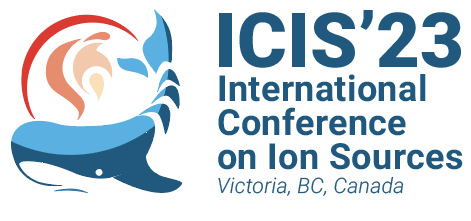Speaker
Description
Negative ion beams are used for a wide range of applications when tandem accelerators are leveraged. Research areas which utilize tandems include nuclear structure, environmental studies, and materials characterization. Tandem accelerators are also used for industrial applications such as ion implantation in semiconductor devices, as well as for medical applications such as Boron Neutron Capture Therapy. A common method for producing certain negative ions is a double-charge exchange ion source which employs an upstream ion source to produce a beam of positive (+1) ions in the keV energy range which are incident on a vacuum region with alkali metal or alkaline-earth metal vapour. The incident positive beam experiences a double electron capture from the metallic vapour such that an energetic negative (1−) ion beam emerges. The use of metallic vapours causes contamination of vacuum surfaces which can result in electrical shorts and arcing, and difficult maintenance with such combustible materials. Doupé and Litherland have demonstrated that negative ion beams can be created by electron transfer from a negative beam (Cu¯) incident on a neutral, non-metallic vapour (ICl). The goal of this paper is to follow the example of Doupé and Litherland and create negative ion beams by impinging an H¯ beam from D-Pace’s TRIUMF licenced ion source (10-30 keV, 0-15 mA) onto non-metallic vapours (He, H2, O2, CO2) in order to avoid contamination and to explore new methods of negative ion production through charge exchange. The charge exchange will take place in an in-vacuo electrostatic accelerator which will be used to extract any newly created negative ions that could be formed (He¯, H¯, H2¯, O¯, O2¯, C¯, CO¯, CO¬2¯ etc). The newly created negative ions will be separate from the incident H¯ beam using a 1:500 resolution mass spectrometer system. Ultimately, the conversion rates from the incident H¯ beams will be reported as measured.
| Funding Agency | MITACS |
|---|---|
| Email Address | andrew.paul@d-pace.com |
| I have read the Code of Conduct to attend ICIS2023. | Yes |

